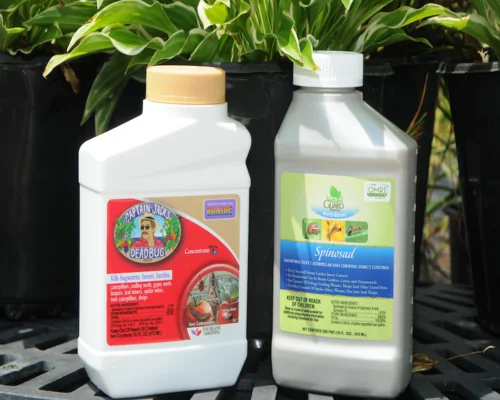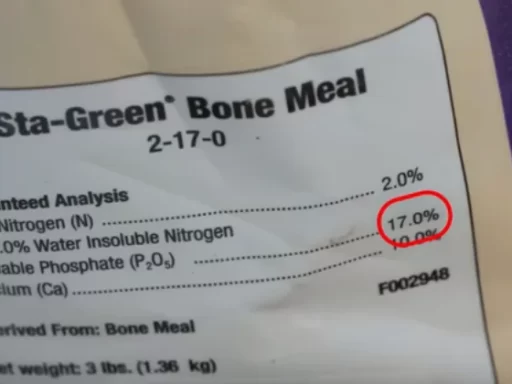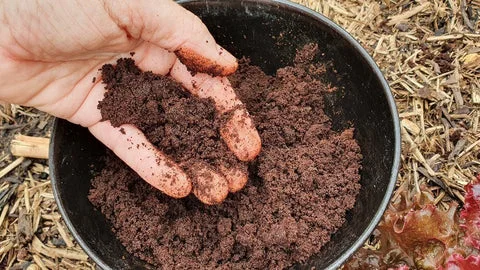As the spring season arrives in full force, pest control becomes a significant concern for gardeners, especially in regions with high insect pressure, such as the Southeastern coast of North Carolina. It is essential to adopt natural pest control solutions that are safe and effective. With the right timing and selection of products, you can keep your garden healthy and pest-free without resorting to harmful chemicals.
In this article, we will discuss four natural pesticides that are effective at eliminating unwanted insects while minimizing harm to beneficial species. It is crucial to stock up on these products before prices rise during peak growing seasons when demand surges.
Why Natural Pesticides?
Many gardeners prefer natural and organic pesticides because they offer a safer alternative to synthetic chemicals. Natural pesticides are typically derived from plants, minerals, or naturally occurring bacteria. They are biodegradable, have lower toxicity levels, and often target specific pests, reducing the risk of harming beneficial insects such as bees and ladybugs. By using natural solutions, you can achieve effective pest control while maintaining the overall health of your garden ecosystem.
However, these products are not always readily available at big box stores, and online prices can increase significantly as the growing season progresses. Therefore, it is advisable to purchase these natural pesticides during late winter or early spring, ensuring you get the best deals before the high-demand season begins.
Here are the top four natural pesticides you should consider for your garden.
1. Pyrethrin: A Potent Contact Killer
Pyrethrin is one of the most powerful natural insecticides available and is derived from the Chrysanthemum flower. It is highly effective against a wide range of insect pests, including both harmful and beneficial species. Pyrethrin works as a potent nerve toxin that kills insects upon contact, causing nervous system damage within minutes.
Although pyrethrin is highly effective, it has a drawback: it is broad-spectrum, meaning it can harm both good and bad insects. Bees, dragonflies, and ladybugs are susceptible to this pesticide, so it is crucial to use it responsibly.
To minimize harm to beneficial insects, it is recommended to apply pyrethrin in the evening after sunset when most beneficial insects have left the area. By the time the sun rises, the pesticide will have degraded significantly, reducing its impact on pollinators.
Pyrethrin has a short half-life, breaking down rapidly in the presence of sunlight and oxygen. It is an excellent choice for managing severe pest outbreaks while limiting the risk of harming beneficial species.
How to Use Pyrethrin Responsibly:
- Apply in the evening after beneficial insects like bees have left the area.
- Spray directly on problem insects to minimize harm to other species.
- Avoid applying during the day when the pesticide degrades quickly.
2. Spinosad: A Bacterial Insecticide
Spinosad is a natural pesticide derived from a soil bacterium. It is not as potent as pyrethrin but is still highly effective against various pests, such as caterpillars, beetles, and spider mites. Unlike pyrethrin, spinosad does not work on contact; instead, insects must consume it by feeding on treated plants.

Once ingested, spinosad disrupts the insect’s nervous system, causing death. It is particularly effective against pests like bagworms, thrips, and leaf miners. However, there is some risk to pollinators if spinosad is applied to flowering plants, as bees may ingest it when they consume pollen.
To reduce this risk, apply spinosad in the evening when bees are not active, allowing the pesticide to work overnight.
Key Benefits of Spinosad:
- Effective against a wide range of pests.
- Safer for beneficial insects than pyrethrin when used properly.
- Works by ingestion, making it ideal for pests that feed on plant leaves.
3. Wettable Sulfur: Dual Action as a Fungicide and Insecticide
Wettable sulfur is a versatile natural pesticide that works as both an insecticide and a fungicide. It is particularly useful for controlling spider mites and fungal diseases such as powdery mildew and rust.
Sulfur is effective when applied as a dust or spray. However, gardeners must be cautious when using sulfur, as it can burn plant leaves if applied at high temperatures (above 85–90°F). Additionally, sulfur should not be used in combination with oil-based sprays, as this can cause severe plant damage.
When to Use Wettable Sulfur:
- Apply in the evening to avoid burning plants during hot days.
- Use after a pest or fungal outbreak for best results.
- Avoid mixing with oil-based sprays or applying to plants recently treated with oils.
4. Bt Concentrate: Targeted Control of Worms and Caterpillars
Bt (Bacillus thuringiensis) is a naturally occurring bacterium that specifically targets worms and caterpillars. When these pests consume plants treated with Bt, the bacteria produce toxins that are fatal to them.
Bt is highly effective at controlling caterpillar infestations without harming beneficial insects like bees and dragonflies. However, it is not a broad-spectrum insecticide, meaning it does not affect adult moths or other hard-bodied insects that lay eggs.
While Bt can be highly effective in areas with significant caterpillar pressure, it may not be the best option for regions with a wide variety of insect pests.
Pros of Using Bt:
- Safe for pollinators and beneficial insects.
- Effective against caterpillars and worms.
- Ideal for targeted pest control in areas with mild insect pressure.
Cons of Bt:
- Limited effectiveness against adult moths and other insects.
- Requires frequent application to maintain control.
Conclusion
By stocking up on these four natural and organic pesticides—pyrethrin, spinosad, wettable sulfur, and Bt concentrate—you can protect your garden from pests without resorting to harmful chemicals. Each of these pesticides offers unique benefits, making them suitable for different types of insect pressure.
When used responsibly, these natural insecticides can help you maintain a healthy garden ecosystem. Be sure to apply them at the right time (typically in the evening) to minimize harm to beneficial species and ensure that they are as effective as possible.
Frequently Asked Questions
- What is the best natural pesticide for caterpillars?
- Bt concentrate is the most effective natural pesticide for caterpillars, as it specifically targets worms and caterpillars without harming beneficial insects.
- Can pyrethrin harm bees?
- Yes, pyrethrin is toxic to bees and other beneficial insects. To minimize harm, it should be applied in the evening when bees are not active.
- Is spinosad safe for pollinators?
- Spinosad can be mildly toxic to pollinators if applied to flowering plants. To reduce risk, apply it at night when pollinators are not present.
- How does wettable sulfur work as a fungicide?
- Wettable sulfur helps control fungal diseases like powdery mildew by inhibiting the growth of fungi on plant leaves.
- When should I apply Bt concentrate?
- Bt concentrate should be applied in the evening so that it remains on the plants overnight, allowing worms and caterpillars to ingest it.
- What is the difference between pyrethrin and spinosad?
- Pyrethrin is a broad-spectrum contact killer, while spinosad is a targeted insecticide that works by ingestion.
- Can I mix sulfur with other pesticides?
- Sulfur should not be mixed with oil-based sprays, as this can cause plant damage. Always follow the instructions on the product label.



